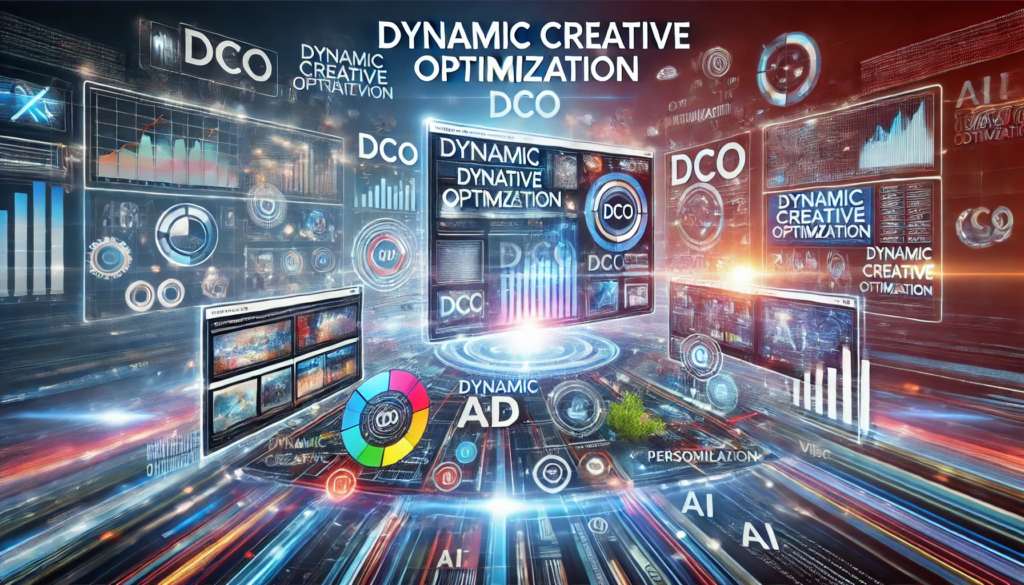
Dynamic Creative Optimization (DCO) is transforming the digital advertising landscape, offering advertisers a powerful tool to enhance engagement and performance. With personalization at its core, DCO enables brands to deliver tailored ad experiences to their audience, driving higher click-through rates (CTR), conversions, and ultimately, ROI. In this article, we’ll explore what DCO is, how it works, and why it’s a game-changer in the advertising ecosystem.
What is Dynamic Creative Optimization (DCO)?
DCO is a leading-edge programmatic advertising technology utilizing real-time data in order to adapt ad creatives for an individual viewer dynamically. In other words, instead of using static ads with one single creative, DCO leverages multiple creative assets—images, headlines, CTAs, and more—and dynamically composes them so as to give the most relevant combination for every user.
All this personalization is driven by machine learning algorithms that look at user behavior, preferences, and contextual factors like location, time of day, and device type to optimize the ad experience in real time.
How Does DCO Work?
- Creative Asset Library
Advertisers upload a variety of creative assets—images, videos, copy variations, and CTAs—into the DCO platform. These assets form the building blocks of the dynamic ad. - Data Integration
DCO integrates with data sources such as first-party customer data, third-party audience data, and contextual data (e.g., weather, location). - Real-Time Assembly
Using machine learning, the platform assembles and delivers the most relevant combination of creative assets based on the data available for each user. - Continuous Optimization
DCO continuously learns and improves by analyzing performance data, ensuring that subsequent ads are even more effective.
Benefits of Dynamic Creative Optimization
- Personalization at Scale: DCO makes it possible to serve highly personalized ads, at scale, to millions of users, creating experiences that are customized to each viewer. A great example is an e-commerce retailer that can run dynamic ads that show products the user recently viewed or left in their cart.
- Improved Ad Performance: With the delivery of relevant content, DCO significantly lifts engagement metrics such as CTR and conversion rates. Personalized ads are more likely to grab attention and drive action.
- Efficient Campaign Management: With DCO, advertisers don’t need to create multiple static ads for different audiences. The platform automates the creative assembly process, saving time and resources while improving efficiency.
- Higher ROI: The combination of better targeting, personalization, and continuous optimization ensures that ad spending is utilized effectively, leading to a higher return on investment.
- Enhanced User Experience: Irrelevant ads can frustrate users, leading to ad fatigue and decreased engagement. DCO ensures that ads are relevant and useful, enhancing the overall user experience.
Use Cases of DCO
- Retail and E-Commerce: Retailers can use DCO to showcase personalized product recommendations based on a user’s browsing history, location, or purchase behavior. For instance, an ad might display winter jackets for a user in a cold climate or sneakers for someone who recently searched for athletic gear.
- Travel and Hospitality: Travel brands can leverage DCO to promote personalized vacation packages. A user searching for flights to Paris might see ads featuring hotel deals, attractions, or discounted airfare.
- Financial Services: Financial institutions can use DCO to promote customized credit card offers, loan products, or investment plans based on a user’s financial profile or browsing behavior.
- Media and Entertainment: Streaming platforms can recommend shows or movies based on a user’s viewing history. For example, a fan of action movies might see ads promoting the latest blockbuster releases in that genre.
How DCO Integrates with Programmatic Advertising
DCO thrives in programmatic environments, where real-time bidding (RTB) allows advertisers to bid for ad placements in milliseconds. Here’s how DCO complements programmatic advertising:
- Real-Time Bidding: DCO works seamlessly with programmatic platforms to deliver dynamic ads to the right audience at the right time.
- Audience Segmentation: Programmatic platforms use data to segment audiences, and DCO further personalizes the ad experience for each segment.
- A/B Testing Automation: Traditional A/B testing requires manual intervention, but DCO automates this process, testing multiple ad variations in real-time to identify the best-performing creative.
Challenges in Implementing DCO
While DCO offers immense potential, it’s not without challenges:
- Data Dependency: DCO requires access to high-quality data for effective personalization. Advertisers must invest in robust data collection and management practices.
- Creative Asset Management: Developing a diverse library of creative assets can be resource-intensive.
- Privacy Concerns: With increasing regulations like GDPR and CCPA, advertisers must ensure compliance when using user data for personalization.
- Technical Expertise: Implementing and managing DCO campaigns requires technical know-how, which may necessitate hiring skilled professionals or partnering with agencies.
Best Practices for Successful DCO Campaigns
- Invest in High-Quality Creative Assets
Ensure your creative library includes diverse, high-quality visuals, headlines, and CTAs to cater to various audience segments. - Leverage First-Party Data
Use your own customer data to create more accurate and effective targeting strategies. - Test and Optimize
Continuously monitor campaign performance and make data-driven adjustments to improve results. - Focus on Compliance
Ensure your campaigns adhere to data privacy regulations to build trust with your audience. - Partner with Experts
Work with experienced DCO providers or consultants to maximize the potential of your campaigns.
Conclusion
Dynamic Creative Optimization is revolutionizing the way advertisers speak to their audiences. By offering users personalized, relevant, and optimized ad experiences, DCO drives better performance, raises user satisfaction, and increases ROI. While challenges do arise, the numerous benefits outweigh the negatives, and as such, DCO becomes an indispensable tool for modern advertisers.
With personalization and efficiency increasingly becoming top priorities for brands, the uptake of DCO will only gather pace, further solidifying its place as one of the cornerstones of digital advertising success.
No responses yet